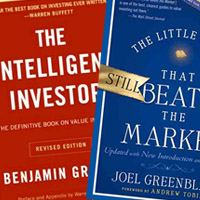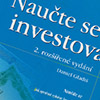The 5 best investing books that every investor must read
Whether you’re looking to dip your toes into the world of investing for the first time or have already taken your initial steps in the financial markets, there’s always something to learn. Dipping into advice from seasoned experts can really transform how you invest your precious money.
The five titles listed here contain a wealth of knowledge that can help you grow your own wealth and become a successful investor. I’ve returned to all of these books again and again over the years to tap into the golden nuggets of knowledge they offer.
Whatever your background, all of these books will help to make you the journey to being the best investor you can be.
The Naked Trader: How Anyone Can Make Money Trading Shares by Robbie Burns
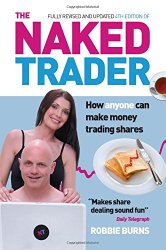 A bestseller and now it its fourth printing, Robbie Burns’ ‘The Naked Trader’ is a superb introductory guide to trading in the UK stock market.
A bestseller and now it its fourth printing, Robbie Burns’ ‘The Naked Trader’ is a superb introductory guide to trading in the UK stock market.
A freelance financial journalist with a CV including ITV, CNN, Channel 4, The Independent and Sunday Times, Robbie Burns has won plenty of fans for his jargon free, no nonsense approach to explaining the world of investment. As a result he is hugely popular among beginners and novices who are looking to find their feet.
Throughout the book, Robbie takes your hand and walks you step-by-step through the process of investing from start to finish. Everything from establishing an investment account (ideally ISA investment), searching for the right shares, analysing companies, selecting a broker to starting to trade is covered here. Highly recommended.
The Zulu Principle: Making extraordinary profits from ordinary shares by Jim Slater
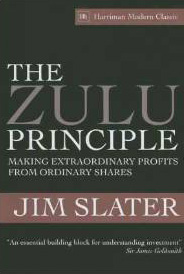 First published in 1990, Jim Slater’s ‘The Zulu Principle’ is considered by many to be a modern classic. Like Robbie Burns’ book, The Zulu Principle is focused on UK markets and its popularity has seen it through many reprints.
First published in 1990, Jim Slater’s ‘The Zulu Principle’ is considered by many to be a modern classic. Like Robbie Burns’ book, The Zulu Principle is focused on UK markets and its popularity has seen it through many reprints.
Slater’s book was one of the first investment books to present investors a screening strategy for the British markets and is jam packed full of examples to support his theories.
A highly respected investment guru, Slater specialises in strategically combining value and growth investing - using a tool he created called the price-earnings growth factor (PEG). The PEG is a simple formula to measure how the price of a share is related to its earnings growth rate. In other words, is its potential growth going to come at a reasonable price?
The Zulu Principle is very practical book and has won him a loyal group of followers. As well as the PEG tool and advice on buying shares, the book also covers many other relevant aspects of investment such as creative accounting; portfolio management; investor and broker relationships and, most importantly, when its the right time to sell shares.
In fact, according to the historical data the Zulu Principle works better in a bull market than in a bear market. But one thing is quite clear: Zulu Principle is the strategy that beats the FTSE.
The Intelligent Investor by Benjamin Graham
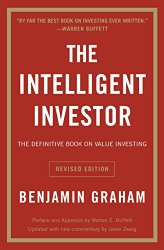 Benjamin Graham is known as ‘the father of value investing’. ‘The Intelligent Investor’ was originally published in 1949 and is one of the most acclaimed books on value investing ever written. Frequently referred to as the ‘bible of investing’, no less a figure than Warren Buffett has championed its message.
Benjamin Graham is known as ‘the father of value investing’. ‘The Intelligent Investor’ was originally published in 1949 and is one of the most acclaimed books on value investing ever written. Frequently referred to as the ‘bible of investing’, no less a figure than Warren Buffett has championed its message.
If you are determined to excel at long term investing then this book is essential. Graham explains his principles of investing in a clear and understandable way, perfectly describing the emotional framework and analytical tools required for financial success. These principles - built on the underlying principle to buy when the price is well below its value - helps to avoid investment bubbles. Graham also advises that investments should be split between stocks and bonds only.
This book lives up to the hype and can really help you step up to the next level as an investor. On the downside, the last revision of this book was in the 1970s so some areas are somewhat out of date - such as references to railway bonds.
Because of this I highly recommend the edition with modern commentary from Jason Zweig, which helps to update the book for the twenty-first century reader.
The Little Book That Still Beats the Market by Joel Greenblatt
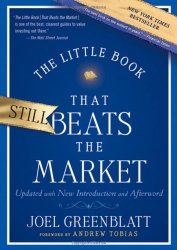 The Little Book That Still Beats the Market is a truly remarkable volume that you can read in just one sitting. Despite its small size, it punches well above its weight and is a perennial bestseller.
The Little Book That Still Beats the Market is a truly remarkable volume that you can read in just one sitting. Despite its small size, it punches well above its weight and is a perennial bestseller.
Joel Greenblatt is an American academic, investor and founder of hedge fund Gotham Capital. Between 1985 and 2006, his fund made annual returns of a whopping 40%.
This punchy, pocket sized book sees Greenblatt give you his tips and strategies to pick the right stocks to portfolio.
The book is an easy read and the author has a knack for making complicated matters simple. Unlike many books of this ilk, it’s easy to apply the theory to reality when it comes to acting on his advice as he provides step-by-step details to follow. However, the techniques do require discipline.
Greenblatt promotes the ‘magic formula’ - that is, searching for companies with the best combination of high earning yields and high returns of invested capital. He advises to keep about 20 to 30 top stocks in your portfolio over the period of one year and to turn them according to their production rate on a strict schedule.
Alongside the book Greenblatt also runs a free website www.magicformulainvesting.com to assist with screening companies based on his value investment criteria. Greenblatt’s site is only set up for US stocks, but there are other screening websites that you can use for screening on other international markets. For UK market there is ADVFN or other investing portals that even have ‘Greenblatt’ screens pre-built, such as Stockopedia.
The Black Swan by Nassim Nicholas Taleb
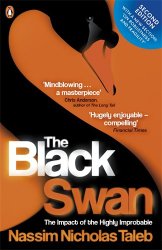 Nassim Nicholas Taleb is one of my favourite authors. I'm fascinated by his worldview and style of thinking. Some reviewers have complained that Taleb is too conceited, boastful, contemptuous and even arrogant, but that's just part of the fun, and it all needs to be taken in with a pinch of salt.
Nassim Nicholas Taleb is one of my favourite authors. I'm fascinated by his worldview and style of thinking. Some reviewers have complained that Taleb is too conceited, boastful, contemptuous and even arrogant, but that's just part of the fun, and it all needs to be taken in with a pinch of salt.
Here, Taleb proclaims that we live in an age of extremes. Black Swans, which weren’t even known to exist until the 19th century, are the author’s chosen metaphor for unpredictable events or processes such as 9/11 or the rapid ascension or domination of Google.
In Extremistan, Taleb argues against the ‘bell curve’ approach towards investing, whereby the use of statistics, data and information is used to create patterns to help predict how markets will change. Taleb warns that when a Black Swan event occurs, investors or the markets are unprepared as their reliance on the bell curve pattern doesn’t factor in these swings. This approach was one of the things that was so damaging during the great crash in the 1920s (where for the Deutschmark jumped from four to four trillion marks per dollar). The Gaussian curve is still used by central bankers and regulators as a risk management tool today.
The Black Swan isn't about investing in the stock market directly, but about how we perceive and explain (usually in hindsight) the occurrence of dramatic events analysts and forecasters never saw coming. Through Taleb you can ponder and learn about the boundaries of maths, theoretical models and human knowledge.The Black Swan will really get you looking at the world differently. In my opinion, this book really helps to open up an investor’s mind.
Bottom line
It was both hugely enjoyable and incredibly difficult to select the top five books that have influenced me the most during my investment career. There were several that didn’t quite make the cut that I may blog on at a later date.
One book in particular that didn’t make it over the line is Learn to Invest by Daniel Gladis. This title didn’t miss out on quality, but for language reasons. Sadly, to date it has only be published in Czech, my native language.
However, to make up for this reluctant admission, I’ll be making Gladis’s book the subject of my next blog.
So be sure to stayed tuned. In the meantime, happy reading.

